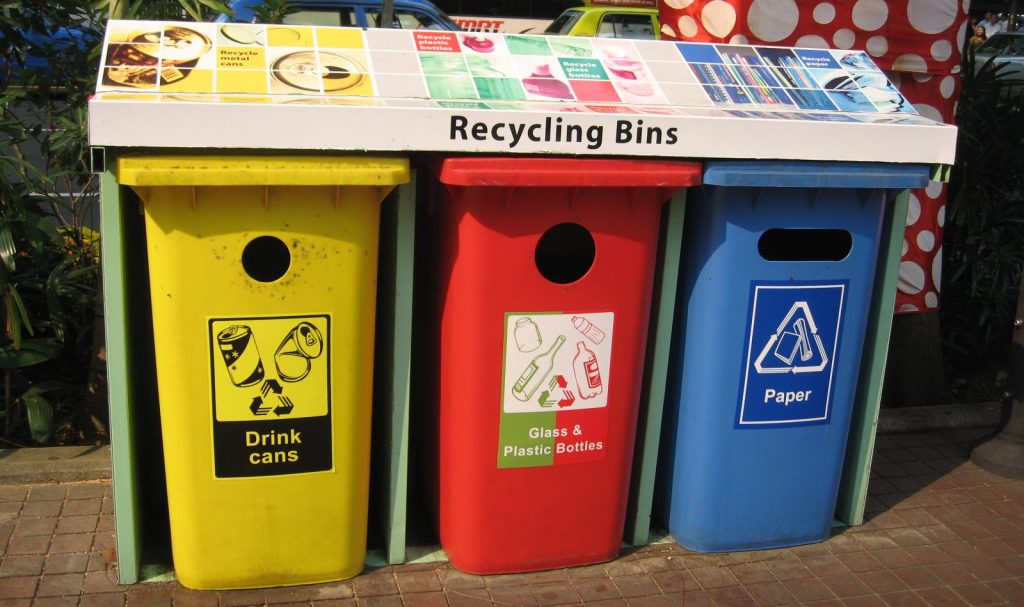Waste Collection Sorting Segregation. Vital to have waste collection, sorting and segregation infrastructure by Dr Shah Abdullah. THE circular economy is an environmentally friendly economic approach aimed at reducing waste of resources, maximising use of materials and allowing regeneration of the natural ecosystem.
Waste Collection Sorting Segregation
This can prevent buildup of waste in landfills and put existing waste through a recovery process that turns it into usable heat, electricity or fuel. It also forms a closed-loop cycle that extends the lifetime of products, enables the recovery of waste and promotes more efficient and sustainable manufacturing of new products.
An efficient waste management system is part of this economic model. A centralised management facility must be fully functioning every day to receive waste at any time and should be made available in each municipal district under the supervision of a state government, always adhering to the same standard of operation controlled by the federal administration.
This can be achieved by building new integrated infrastructure in each municipality or using existing landfill management facilities. The challenge will be in the feasibility, budget and support from the government as well as locals.
Not all waste is meant to be disposed of, buried or incinerated. Some can be recycled and should be channelled to a recycling facility so that new products can be made.
In some cases, waste can be reused or repurposed, such as old furniture, clothes, vehicles and electronics items, including their components. Instead of recycling, they can be cleaned, repaired, refurbished or extracted so that the life cycle of these items or their components can be extended, thus saving raw material and money.
To make it a reality, an efficient facility covering the collection, segregation and sorting of waste is needed. This facility must be capable of making full use of the waste. Otherweise, it should provide other ways to recover it.
First, collection can be done
by introducing a department to receive waste. Contributors can be anyone, including the landfill management that wants its waste to be processed properly.
To increase the collection of waste, this facility can deploy its own logistics or invite third-party companies, including non-governmental organisations, to bring waste from other sources.
A common challenge in waste collection is the mixing of waste that can lead to pollution. This is why instead of letting everything get mixed up, waste must be immediately separated based on condition, whether for composting, reuse, refurbishing, recycling or recovery.
Wet waste, for instance, consists of organic substances that can be composted. The compost can go to the agricultural sector. However, wet plastic cannot be mixed with wet waste and must be dried first before it can be processed with other plastics.
Plastic from different products, like plastic bottles and plastic packaging, cannot be mixed as they are made with different types of polymers and must be separated before they are turned into new products.
At this stage, a sorting system is necessary to separate waste before it is recycled. Waste sorting can easily be made faster with machine learning algorithms that can differentiate material type, purity, shape, weight and colour.
But this technology is available only in developed nations. It’s time to consider adopting new technologies in waste sorting to protect the environment. Separating waste from the beginning is important and this should first be done by consumers before technology can take over the sorting process, especially for existing and already mixed waste.
In future, the function of waste facilities can be diversified beyond saving the environment or for economic activities, such as providing basic needs to the needy or people affected by disasters. Some waste and items sent to these facilities are still in good condition, clean and well-functioning.
Some items are highly sought- after and can be sold in the secondhand market to generate income. Used items can be a source of aid for people, especially those affected by the recent floods. The disaster created more waste which required more work to clean up.
An efficient waste collection centre is needed to address this and support the recovery process, not only in the post-pandemic era, but also for post-disaster work.
The writer is a research fellow at the International Institute of Advanced Islamic Studies Malaysia
What You Need to Know About the Tax Incentive on Green Assets During This Pandemic?
Tax incentive on Green Investment Tax Allowance (GITA) Assets
Overview:
In Budget 2020, to further promote the use of green technology, the Government had extended the list of green assets, from 9 assets to 40 assets.
Here is a quick glimpse of what is GITA.
Key takeaways:
I. Basic understandings of GITA Assets
II. Application procedures
Summary of learnings:
I. Basic understandings of GITA Assets
A) Who can claim?
A Company incorporated in Malaysia under the Companies Act 1965/2016.
B) What can claim?
Any assets which are “qualified” under green technology. 40 kinds of assets are listed in the guideline.
Generally, the assets must incur for:
– minimize the degradation of the environment or reduce greenhouse emission
– promotes health and improvement of the environment
– conserves the use of energy, water, and/or other forms of natural resources
– promote the use of renewable energy
– able to recycle waste material resources
C) How much to claim?
An additional 100% of qualifying capital expenditure can be offset against 70% of statutory income for the year.
The unutilized allowances can be carried forward until fully absorbed.
D) When can I claim?
The period of purchase period must be made from 25 October 2013 until 31 December 2023.
II. Application procedures
1. Apply Form (MGTC GITA/A Form) to Malaysian Green Technology or Climate Change Centre (MGTC))
2. Pay the processing fee and wait for verification.
3. Received MGTC Validation Letter.
4. Make your claim in the tax return form.
Source:
Guidelines for Green Technology Tax Incentive (GITA/GITE)
https://www.myhijau.my/wp-content/uploads/2021/02/REC-GTGT-007-
GUIDELINES-FOR-GREEN-TECHNOLOGY-TAX-INCENTIVE.pdf
Myhijau official website https://www.myhijau.my
????? ?? :
Wisma ???, 53 Jalan Molek 1/8, Taman Molek, 81100 Johor Bahru
Wisma ???, 41, Jalan Molek 1/8, Taman Molek, 81100 Johor Bahru
??? (?????,???, ????????)
Website www.ktp.com.my
Instagram https://bit.ly/3jZuZuI
Linkedin https://bit.ly/3sapf4l
Telegram http://bit.ly/3ptmlpn
??? (???????????, ???????/???????, ????????)
Website www.thks.com.my
Facebook https://bit.ly/3nQ98rs
??? ?????????
(??? ???????? ????????? ??? ??? ??????????)
Tiktok http://bit.ly/3u9LR6Q
Youtube http://bit.ly/3ppmjyE
Facebook http://bit.ly/3ateoMz
Instagram https://bit.ly/3jZpKLo
??? ??????
(??? ???????? ??? ????????? ??? ???????, ????????? & ??????????? ?????????? )
Instagram https://bit.ly/3u2PxHg
Facebook http://bit.ly/3rPxz9o
We are one-stop (2️⃣0️⃣years+ history) audit, tax, secretarial, accounting, and payroll firms that commit to help and grow our clients’ business.



